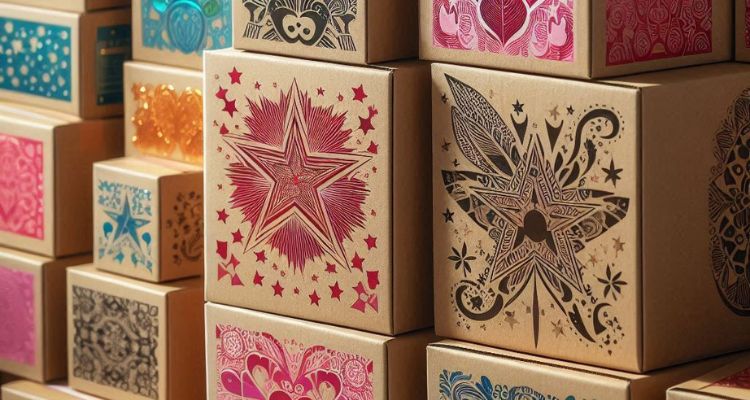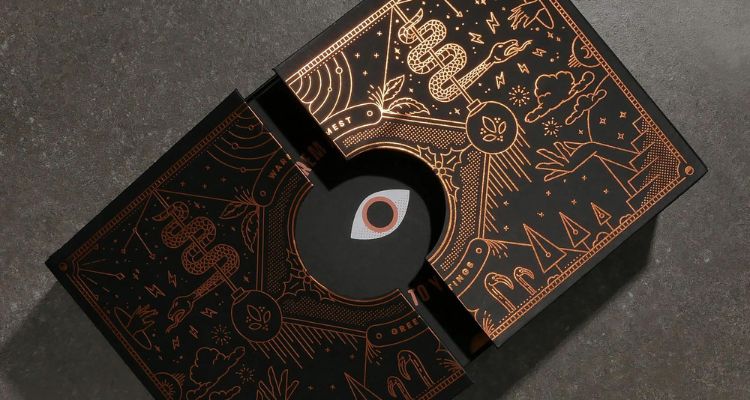Have you ever wondered about the shimmer on your gift boxes or the glossy detail on book covers? That’s the magic of foil stamping! This blog explores how this traditional yet dynamic technique continues to revolutionize the printing world, from luxury packaging to high-end publications.
What is Foil Stamping?
Foil stamping is a specialized printing process that uses heat, pressure, and metallic paper (foil) to create sparkling text and graphics on various materials. But why is it so popular? From packaging to greeting cards, foil stamping adds a touch of luxury and sophistication that brands adore.
Common Uses in Various Industries
Foil stamping isn’t just for looks; it’s versatile too! It’s widely used across industries such as:
- Packaging: Enhances product appeal on shelves
- Decorations: Elevates event invites and decorations
- Fashion: Adds details to leather goods and apparel
A Brief Journey Through Time
The roots of foil stamping stretch back to ancient times but gained prominence in the 19th century with the rise of elegant book covers. So, how has it evolved? Over decades, this craft has transitioned from manual to digital, making it more accessible and varied than ever.
Read Also: Unlock the Art of Embossing and Debossing
The Foil Stamping Process: How It Works

Foil stamping is a fascinating process that involves several steps and techniques to create vibrant and luxurious finishes on various materials. Let’s break down how it works into three main types: hot foil stamping, cold foil stamping, and digital foil stamping.
Hot Foil Stamping
Hot foil stamping is the most traditional form of this art. It utilizes heat to transfer metallic foil to a surface, creating a bright, reflective finish. The process starts with a metal die carved with the desired design. The die is heated and pressed onto the foil, which lies over the material to be stamped. The heat helps the foil’s adhesive layer to stick to the substrate, leaving the design imprinted once the die is lifted. This method is perfect for high-end products like business cards, invitations, and book covers.
Cold Foil Stamping
Cold foil stamping, on the other hand, is suitable for materials sensitive to heat. In this technique, a UV-curable adhesive is printed on the substrate in the shape of the desired design. Foil is then pressed onto the surface, and areas with adhesive keep the foil intact. A UV light passes over the material, curing the adhesive instantly and binding the foil permanently to the substrate. This method is excellent for delicate items and allows for faster production speeds.
Digital Foil Stamping
A modern twist in the foil stamping world, digital foil stamping does not require dies or specialized equipment. Instead, it uses digital printing technology to apply a glue-like ink onto the material. The foil adheres to the printed ink, and heat is applied to cure or set the design. This method is highly flexible, allowing for detailed and complex designs with quick setup times, perfect for short runs and on-demand printing.
The Role of Heat, Pressure, and Time
Each type of foil stamping relies on the combination of heat, pressure, and time to achieve a flawless finish. Heat activates the adhesive layer of the foil, pressure embeds it onto the substrate, and time ensures a strong and durable bond. Whether through traditional or modern means, these elements are crucial for achieving the high-quality results that foil stamping is known for.
Types of Foil Used
Each type of foil offers a unique finish that can be tailored to different project needs:
Metallic Foils
These foils provide a shiny metallic finish that mimics metal surfaces. Available in various colors like gold, silver, and bronze, they are perfect for adding a touch of elegance and luxury.
Pigmented Foils
Offering a wide range of colors without the metallic shine, pigmented foils are ideal for projects that require a matte or satin finish.
Special Foils
For designs that need a bit more flair, special foils like holographic or patterned foils create visually striking effects that change appearance in different lights.
Equipment and Technology of Foil Stamping
The Tools of the Trade
The equipment used in foil stamping varies from traditional hand-set presses to advanced digital printers:
Traditional Presses
These are typically used for hot foil stamping. They require custom-made metal dies and can be labor-intensive but are unrivaled for producing classic, high-quality prints.
Digital Printers
Used in digital foil stamping, these machines provide a quick setup and the ability to change designs easily, making them suitable for small runs and detailed graphics.
Read Also: Mastering Packaging Design Software: 12 Best Tools
Applications and Benefits: Why Choose Foil Stamping?

Foil stamping is chosen for its visual appeal, durability, and efficiency:
Visual Appeal
The luxurious finish of foil stamping is eye-catching and elevates the perceived value of products.
Durability
Foil-stamped designs are long-lasting and resistant to fading, maintaining their brilliance over time.
Efficiency
Especially with modern digital techniques, foil stamping can be incredibly cost-effective for large runs with minimal waste.
Practical Considerations and Limitations
Designing with Foil
When planning a foil stamping project, consider the following:
Material Compatibility
Smooth, flat surfaces such as paper, cardstock, and certain plastics achieve the best results. Rough or highly textured materials may not hold the foil well.
Complex Designs
While foil stamping can produce stunning details, extremely intricate designs or very small text might lose clarity or sharpness.
Case Studies and Examples
From bespoke wedding invitations to unique wine labels, real-world examples showcase the transformative power of foil stamping. Want to see them in action? These case studies highlight the technique’s potential to elevate ordinary products into luxury experiences.
Future of Foil Stamping
As technology evolves, so does foil stamping. Expect to see more sustainable materials and even more precise application techniques in the near future. Stay tuned for innovations that continue to push the boundaries of what’s possible!
Conclusion
Foil stamping remains a key player in the printing industry, cherished for its elegance and versatility. Whether you’re a designer, marketer, or manufacturer, understanding and utilizing foil stamping can significantly enhance your projects and products. Ready to explore the possibilities with foil stamping for your next project?
Inspired to try foil stamping? Contact us today to learn how 99 designs packaging can bring a touch of brilliance to your next project!





